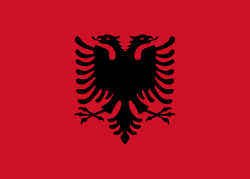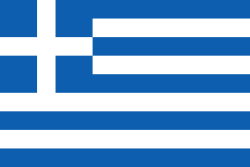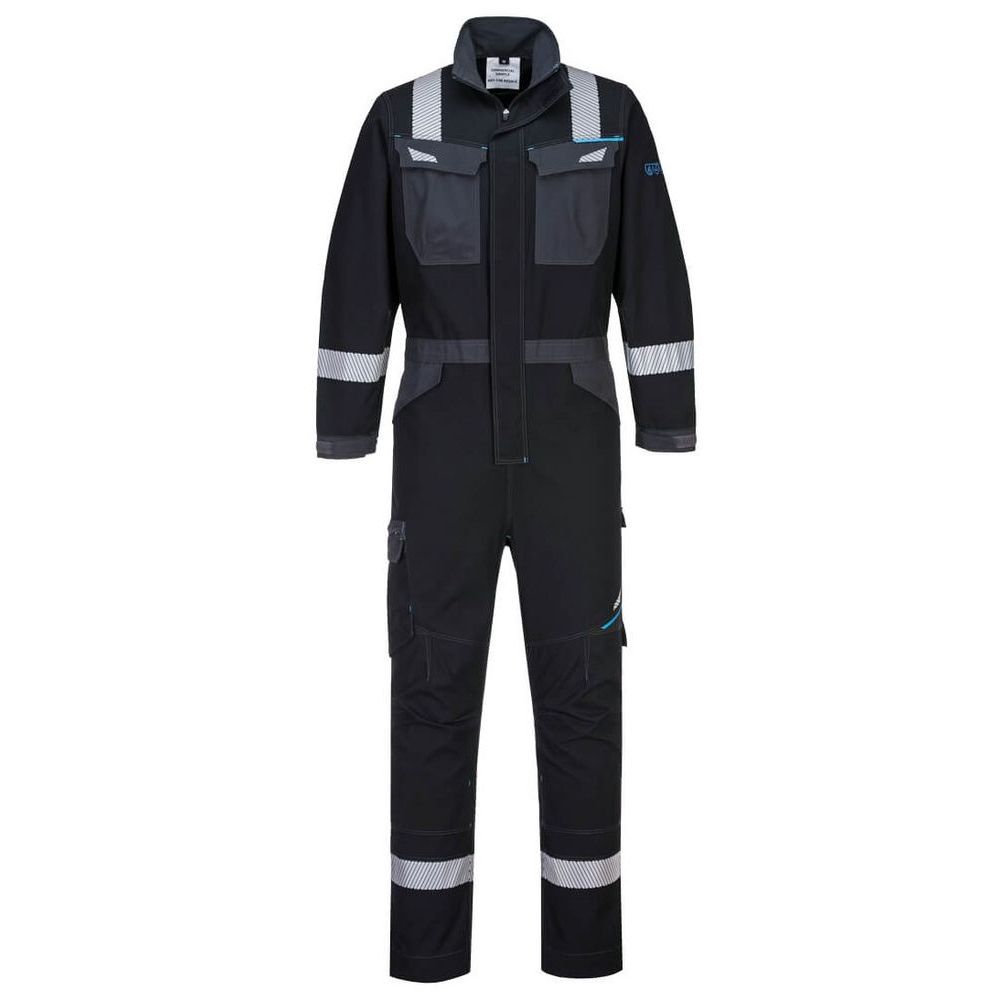FR503 WX3 FR комбинезон, Inherent FR
Модерна FR комбинезон направен од нашата инхерентна Modaflame 280гр ткаенина. Иновативните карактеристики на дизајнот како растегливите панели обезбедуваат одличен комфор и флексибилност во клучните делови на движење. Други клучни карактеристики вклучуваат компоненти без метал,задна вентилација,прилагодлива половина, превиткани ракави, прилагодливи манжетни, извезени FR логоа и повеќе џебови за доволно складирање.,
Карактеристики
Инхерентно пламен отпорни квалитети нема да се намали
заштита од зрачење, конвективни и контакт на топлина
Повеќе џебови
Stretch panelling во клучните делови овозможуваат одличен комфор и флексибилност
Сегментна рефлектирачка лента нанесена со топлина за зголемена видливост
Пропустливи од позади за дишливост и удобност
Нов модел
CE-CAT III
Овој симбол означува дека ткаенинате има UPF рејтинг 40+ и блокира 98% од UV зраците кои паѓаат врз облеката
Овој симбол укажува дека патентот може да биде отворен од горната и долната страна на облеката.
Високо видливи бои
Еластичен колан за убаво прилегање
Растегливиот дел на препоните овозможува максимална флексибилност и го намалува оптоварувањето
Прилагодлив раб за прилагодување на сите должини на ногавиците
Џеб за метар
Две нивоа на џебови за штитници за колено овозможувајќи две опции за позиционирање
Сертифицирано од европската комисија
100% без метал
10 џебови за голем багаж
Материјали:
Ткаенина на внатрешноста: Modaflame: 60% Modacrylic, 39% памук, 1% јаглеродно влакно, 280g
Контрастна ткаенина: Modaflame Stretch: 60% Modacrylic , 36% памук, 3% еластан, 1% јаглеродни влакна
Стандарди
EN ISO 11612 (A1+A2, B1,C1,F1)
EN ISO 11611 Класа 1 (A1+A2)
EN 1149-5
IEC 61482-2 IEC 61482-1-1 (Elim 6.4 CAL/CM²)
IEC 61482-2 IEC 61482-1-2 APC 1
EN 13034 ТИП 6
ASTM F1959/F1959M-12 (ATPV=8.4CAL/CM²(HAF=75.8%))

PORTWEST WX3
RELIABLE PROTECTION WHATEVER THE INDUSTRY Work environments can be tough on clothing, WX3™ workwear is designed to withstand tough conditions, combining reinforced stitching, abrasion-resistant panels, and our most durable fabrics. This combination of durable and robust fabrics, improved fit and better stretchability allows the wearer to move more freely, enhancing comfort and flexibility. Available in the core colours demanded by industry, WX3™ allows you to offer a uniform look to your workforce, regardless of their function and colour preference. With inner and outer pieces that can be layered up or down, WX3 offers exceptional versatility regardless of climate or industry.
EN ISO 11612 Heat & Flame
Letter A (EN 15025) This test consists of applying a flame to a fabric sample for 10 seconds. To pass the test, the after flame & smoulder times and formation of holes must be within the tolerances within the standard. The application of a flame can take place in two ways: Code Letter A1 Surface Ignition, ISO15025 A Procedure A (leads to Class A1), the flame is applied horizontally to the face of the fabric No specimen shall permit any part of the lowest boundary of any flame to reach the upper or either vertical edges No specimen shall give hole formation of 5mm or greater in any direction, except for an inter-lining that is used for specific protection other than heat and flame protection. No specimen shall give flaming or molten debris The mean value of after flame time shall be ≤ 2s The mean value of afterglow time shall be ≤ 2s Code Letter A1 Edge Ignition, ISO15025 B Procedure B (leads to Class A2), the flame is applied to the bottom edge of the fabric sample. No specimen shall permit any part of the lowest boundary of any flame to reach the upper or either vertical edges No specimen shall give flaming or molten debris The mean value of after flame time shall be ≤ 2s The mean value of afterglow time shall be ≤ 2s Letter B (ISO 9151) Convective Heat: determination of the heat transmission when exposed to flames. The sample is held above the flame and the rise in temperature on the topside of the sample is measured with a calorimeter. The length of time the sample can remain exposed before its temperature rises by 24 °C is determined. B1: 4 < 10 seconds, B2: 10 < 20 seconds, B3: 21 seconds and longer Letter C (ISO 6942) Exposure to Radiant Heat. In this test, a fabric sample is exposed to radiant heat (infrared rays). The temperature on the reverse (unexposed) side of the sample is registered using a calorimeter. Subsequently, the length of time the sample the sample can remain exposed before its temperature rises by 24°C is measured. The test procedure is the same as ISO 11611, but the classification is different: C1: 7 < 20 seconds, C2: 20 < 50 seconds, C3: 50 < 95 seconds, C4: 95 seconds and longer Letter D and E (ISO 9185) D = Aluminium E = Molten Iron Determining the level of protection against spatters of molten metal. A membrane (with similar properties to human skin) is attached to the reverse of the fabric sample sequentially rising quantities of molten metal (Aluminium or Iron as applicable) are splashed on the sample. The quantity of molten metal which deforms the membrane is determined. The classification for molten aluminium is: D1: 100 < 200 grams, D2: 200 <350 grams, D3: 350 grams and more The classification for molten iron is: E1: 60 < 120 grams, E2: 120 < 200 grams, E3: 200 grams and more Letter F (ISO 12127) This is a new test to establish a value for contact heat. The classification in this respect: F1: 5 < 10 seconds, F2: 10 < 15 seconds, F3: 15 seconds and longerDetails
EN ISO 11611 Welding & Allied
Standard specifies two classes with specific performance requirements. Class 1: is protection against less hazardous welding techniques and situations causing lower levels of spatter and radiant heat. Class 2: is protection against more hazardous welding techniques and situations causing higher levels of spatter and radiant heat.Details
IEC 61482-2 Protective Clothing Thermal Arc Hazards
Standard for protective clothing against the thermal effects of an electric arc event. Two different test methods: Open Arc IEC 61482-1-1 and Box test EN 61482-1-2. OPEN ARC - IEC 61842-1-1 (USA). The first result, ELIM - The maximum incident energy (cal/cm²) the garment can withstand before the wearer would have a 0% probability of a second degree burn. The second result is either: ATPV (Arc Thermal Performance Value, cal/cm²) The maximum incident energy the garment can withstand before the wearer would have 50% probability of a second degree burn or EBT (Energy Break Open Threshold, cal/cm²) The incident energy at which a 50% probability of a breakopen occurs resulting in a second degree burn. Since ELIM indicates an energy value at 0% probability of a second degree burn and ATPV/EBT at 50% probability, the ELIM value is usually lower than ATPV/EBT. Large differences between the ELIM and ATPV/EBT results highlight the importance of wearing several layers of garments to ensure you are properly protected. EN 61482-1-2 (Europe) is evaluated in two classes in the same test: APC1 protects against electric arc of 4kA (arc energy 168 kJ), APC2 protects against electric arc of 7kA (arc energy 320 kJ). Unlike the American standard, there is not a result scale in this garment tests, only two levels where the garment either passes or fails. A garment with one layer of Flame Retardant fabric usually passes APC 1 - even thin shirt fabrics. To pass APC 2, a system with two or three fabric layers or a lined garment is normally required. This makes it more difficult to adapt the protection to the risk, without compromising on comfort. As APC 1 is a relatively low level of protection, we always recommend a basic protection of at least 8 cal/cm².Details
EN 13034 Liquid Chemicals
Standard for protection of a potential exposure to a light spray, liquid aerosols or low pressure, low volume splashes when complete liquid permeation barrier (at a molecular level) is not required. The following chemical groups/chemicals can be tested: H2SO4 30% (Sulphuric acid), NaOH 10% (Sodium hydroxide also called lye and caustic soda), O-xylene, Butanol. The result is given in scale 1-3 where the maximum value is 3. To pass the test and be able to use the EN 13034 symbol in the CE-marking, at least one chemical shall obtain level 3 for liquid repellency and at least one chemical shall obtain level 2 for resistance to penetration.Details
Inherent FR Garments
Inherent fabric guarantees lifelong protection for the wearer. The FR properties lie in the molecular structure of the fibres and cannot be washed or worn out. PROS: excellent heat and ARC protection, excellent colour fastness even after numerous washings hence good cost in use performance, typically lighter weight solutions with excellent comfort levels, typically used in less dirty environments where the corporate look is also important. CONS: limited protection against molten metal splash, typically a more expensive fabric than FR treated. The most common FR fibers used in protective clothing are modacrylics and aramidsDetails
Споделете :
| Големини - Облека | S - Small or M - Medium or L - Large or XL - XLarge or XXL - XXLarge or XXXL - 3XLARGE |
| Боја | BKR Црна |
Once the user has seen at least one product this snippet will be visible.







